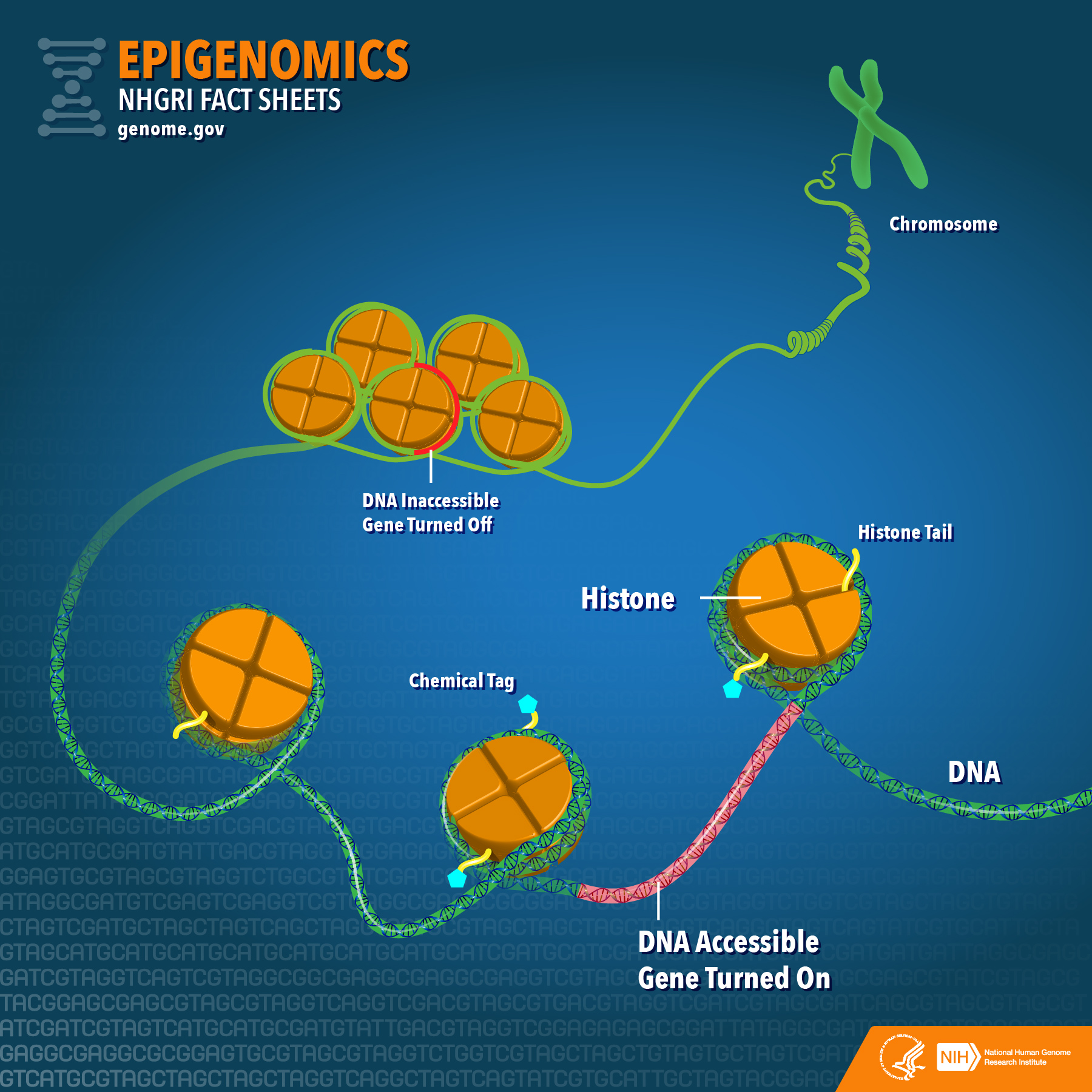The CIPHERS project acronym stands for “Cannabis-Induced Potential Heritability of Epigenetic Revisions in Sperm,” but what does that actually mean? Put simply, the CIPHERS project is exploring whether fathers’ cannabis use can impact how genetic information in the sperm is read and interpreted, and whether that may affect their children. We are also interested in any associated health outcomes from cannabis use, whether any epigenetic changes are reversible, whether similar changes happen in laboratory animals, and whether any effects can be passed on from one generation to the next. Scientists are finding that many different kinds of exposures can lead to epigenetic modifications, and the CIPHERS project investigators are working to add to the growing field of epigenetics research.
What is epigenetics?
Epigenetics is a relatively new field of study, yet scientists’ understanding of how the external environment shapes an individual’s epigenome is rapidly evolving. To begin, all cells (except sperm, egg, and red blood cells) in the human body have the same genetic content, but nonetheless perform distinct and specialized functions. For example, hair cells and liver cells have very different functions, but have identical DNA. Epigenetic factors are responsible for the changes in gene expression that explain this phenomenon. Epigenetic marks help direct gene expression by controlling which proteins are able to interact with the DNA. Marks help to silence or enhance expression of specific genes specific to each cell type. In this way, epigenetic marks can be thought of as the set of instructions that tells genes what to do.

1:Epigenetic marks on DNA include histone modification (red) and “chemical tags” of methylation (yellow/blue)
There are two major types of epigenetic marks: the first involves direct modification of the DNA strands by the addition of a methyl chemical group, called methylation. The second involves chemical modification of the histone proteins that the DNA strands are wrapped around, which is called histone modification. Methylation is currently the most extensively researched epigenetic modification and occurs at different locations along the “reading path” of specific genes. Usually, when methylation occurs near the start site of a gene, the changes are involved in silencing gene expression. When methylation is present within the body of a gene, the changes can enhance gene expression. We can think of DNA methylation as an “on/off switch” whose on/off state varies with location relative to the gene’s start site.

Visualizing epigenetic changes: methylation and histone modification. Image Source: (https://www.whatisepigenetics.com/fundamentals/)
The other epigenetic marks, histone modifications, affect how tightly the strands of DNA are wrapped around the histone proteins, as seen in the image to the right. Histones help to tightly pack the DNA so it can fit in the nucleus of the cell. Modification of the histones influences how easily other proteins can bind to the DNA which, in turn, regulates gene expression. While DNA methylation is akin to an on/off switch, histone modifications can be thought of as a dial to either enhance or repress DNA expression. Together, these epigenetic marks dictate the timing and levels of gene expression and ultimately determine which genes throughout the genome are actively used and which genes are shut off in a given cell type.
The video below provides more examples of how epigenetic modifications ultimately affect our physical bodies and our overall health:
—
Stay tuned for part two of this blog post, where we’ll talk about our current epigenetic research in the CIPHERS project!
